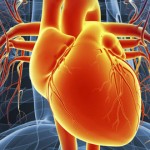Introduction: Heart failure, a key contributor to cardiovascular disease (CVD) morbidity and mortality, is associated with fewer symptoms and higher (preserved) ejection fraction, but higher mortality rates, in rheumatoid arthritis (RA) patients than among those in the general population.
In the general population, higher levels of circulating proinflammatory cytokines, such as tumor necrosis factor (TNF) and interleukin 6 (IL-6), are independent predictors of heart failure. In rodents, infusion of TNF reduced myocardial contractility and cardiac-specific overexpression of a TNF transgene is associated with myocardial inflammation, remodeling, fibrosis and eventually heart failure. In RA patients, circulating levels of TNF and IL-6 are orders of magnitude higher than those shown to predict heart failure in the general population; however, little is known about inflammatory processes within the RA myocardium itself.
Autopsy studies of RA hearts from the mid-20th century suggested that myocarditis may occur in 15–20% of RA patients. However, contemporary histologic characterization studies of the myocardium in RA patients are few, mostly limited to patients with a known history of ischemic CVD.
The conventional gold standard for diagnosing myocarditis is endomyocardial biopsy. However, its sensitivity is limited by the heterogeneous distribution of myocarditis. This, coupled with its invasiveness, expense and risk of complications, has limited investigations of subclinical myocarditis in patients with RA. Cardiac magnetic resonance (CMR) with late gadolinium enhancement (LGE) has been used to identify myocardial abnormalities, but clinically approved gadolinium-based contrast agents distribute to the extracellular space and are not taken up by cells. Thus, myocardial LGE reflects interstitial edema, but cannot directly identify inflammatory infiltrates, nor can LGE identify diffuse myocardial involvement, only focal.
CMR T2-weighted imaging (T2WI), a more sensitive method for measuring myocardial edema that is not dependent on gadolinium, may detect diffuse myocardial involvement but does specifically indicate inflammatory cellular infiltration.
In recent years, 18-fluorodeoxyglucose (FDG) positron emission tomography with computed tomography (PET-CT) has been shown to have high sensitivity for detecting myocardial inflammation.
Objective: These researchers set out to determine the prevalence and correlates of subclinical myocardial inflammation in patients with RA.
Methods: RA patients (n=119) without known cardiovascular disease underwent cardiac FDG PET-CT. Myocardial FDG uptake was assessed visually and measured quantitatively as the standardized uptake value (SUV). Multivariable linear regression was used to assess the associations of patient characteristics with myocardial SUVs. A subset of RA patients who had to escalate their disease-modifying antirheumatic drug (DMARD) therapy (n=8) underwent a second FDG PET-CT scan after six months, to assess treatment-associated changes in myocardial FDG uptake.
Results: Visually assessed FDG uptake was observed in 46 (39%) of the 119 RA patients, and 21 patients (18%) had abnormal quantitatively assessed myocardial FDG uptake (i.e., mean of the mean SUV [SUVmean] ≥3.10 units; defined as two SD above the value in a reference group of 27 non-RA subjects). The SUVmean was 31% higher in patients with a Clinical Disease Activity Index (CDAI) score of ≥10 (moderate to high disease activity) compared with those with lower CDAI scores (low disease activity or remission) (P=0.005), after adjustment for potential confounders. The adjusted SUVmean was 26% lower among those treated with a non-tumor necrosis factor–targeted biologic agent compared with those treated with conventional (nonbiologic) DMARDs (P=0.029). In the longitudinal substudy, the myocardial SUVmean decreased from 4.50 units to 2.30 units over six months, which paralleled the decrease in the mean CDAI from a score of 23 to a score of 12.
Conclusion: Subclinical myocardial inflammation is frequent in patients with RA, is associated with RA disease activity and may decrease with RA therapy. Future longitudinal studies will be required to assess whether reduction in myocardial inflammation will reduce heart failure risk in RA.
Excerpted and adapted from:
Amigues A Tugcu A, Russo C, et al. Myocardial inflammation, measured with 18-fluorodeoxyglucose positron emission tomography with computed tomography, is associated with disease activity in rheumatoid arthritis. Arthritis Rheumatol. 2019 Apri;71(4):496–506.


